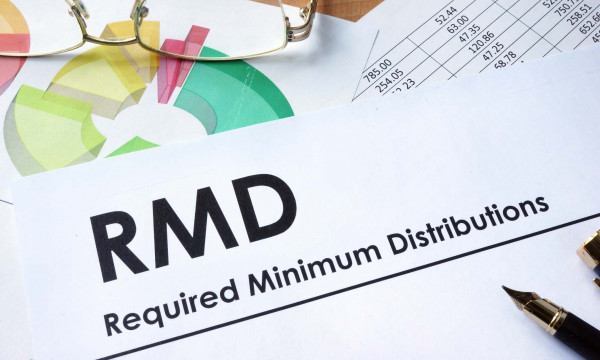IRS issues guidance for student loan matching contributions

On August 19, 2024, the IRS issued Notice 2024-63, providing helpful information to employers that want to make matching contributions based on a participant’s qualified student loan payments (QSLPs).
The concept of student loan matching contributions was introduced in the SECURE 2.0 Act of 2022 (SECURE 2.0), offering employers a valuable recruiting and retention tool that allows for employees with burdensome student loan debt to save for retirement. However, many employers have been reluctant to implement a student loan matching contribution feature without IRS guidance. This new IRS notice is expected to motivate more employers to offer this feature in their 401(k), 403(b), SIMPLE IRA, or governmental 457(b) plans.
First, some background
Before SECURE 2.0 became law, employer matching contributions could only be made based on a participant’s elective deferrals (called an “elective deferral match”). Under SECURE 2.0, however, an employer may, but is not required to, make matching contributions based on a participant’s student loan payments (called a “QSLP match”). The maximum QSLP amount for plan purposes is the deferral limit reduced by any elective deferrals made by the participant.
For example: Let’s say a participant has $60,000 in compensation. She makes $20,000 in student loan payments and $4,000 in elective deferrals. Her deferral limit is $23,000. The maximum QSLP amount for plan purposes is $19,000 ($23,000 deferral limit minus $4,000 elective deferral amount).
QSLP requirements
A matching contribution may be made on QSLPs only if the following requirements are met:
- The participant must make loan payments on a qualified education loan.
- The student loan must be incurred to pay for qualified higher educational expenses for the participant, spouse, or dependent.
- The participant must have a legal obligation to make the loan payments.
How elective deferral and QSLP matches align
Elective deferral matches share several similar requirements and features with QSLP matches, which we’ll explain below:
Eligibility. A plan’s eligibility rules that apply to the elective deferral match portion of the plan must also apply to the QSLP match portion of the plan. For example, if an employee is immediately eligible to participate in the elective deferral match portion of the plan, they are immediately eligible to participate in the QSLP match portion of the plan.
Allocation conditions. The allocation conditions to receive an elective deferral match must be identical to the allocation conditions to receive a QSLP match. For example, if a plan requires a participant to complete 500 hours of service to receive an elective deferral match, then a participant who completes 500 hours of service in a plan year would also be eligible to receive a QSLP match.
Rate of matching contribution. The QSLP match rate must be identical to the elective deferral match rate. For example, assume a plan makes a 100% matching contribution on a participant’s elective deferrals up to 4% of a participant’s pay. In this case, if the participant makes QSLPs instead of making elective deferrals, then the plan must make a 100% matching contribution on a participant’s QSLPs up to 4% of the participant’s pay.
Vesting provisions. If there is a vesting schedule for the elective deferral match, then the same vesting schedule will apply to a QSLP match.
Certification requirements
The following information must be certified before a QSLP match may be made on behalf of a participant:
- Loan payment amounts during the year
- Dates on which loan payments were made
- The participant, and not someone else, made the loan payments
- The loan payments were made with respect to a qualified education loan to pay qualified higher education expenses for the participant, spouse, or dependent
- The participant was legally obligated to make the loan payments
The IRS notice provides significant flexibility on how to meet the certification requirements. For example, the plan sponsor can accept a participant’s affirmative self-certification as to any or all of the certification items listed above. Alternatively, the employer can establish reasonable procedures to validate the certification items. In addition, the employer may want to hire a third-party service provider to certify loan payment amounts and dates, and that the participant made the payments.
Factors to consider before adopting a QSLP match program
If you’re thinking about offering a QSLP matching contribution feature in your plan, we recommend talking to your Union Bank Relationship Manager or qualified ERISA counsel to develop procedures addressing the following:
- Will there be an annual QSLP match deadline, or will there be multiple match claim deadlines throughout the year (e.g., quarterly deadlines)?
- If there will be annual QSLP match deadline, what is that deadline (e.g., 45 days after the end of the plan year)?
- Will QSLP matches be made at the same frequency as elective deferral matches?
- What type of certification and verification procedures will be implemented?
- Who will be responsible for verification? A third party? The HR department?
A helpful webinar
We know SECURE 2.0, QSLPs, and deferral matches are a complicated topic, but you don’t have to figure it all out on your own. In fact, your friends in UBT’s Retirement Plan Services department will soon be hosting a webinar to help plan sponsors like you gain the insight you need as you choose your path forward. Join us on November 14 at 10 a.m. for a special clients-only webinar. Click here to register!
If you have any questions about student loan matching contributions, please contact your Relationship Manager or a qualified tax advisor.
Learning Center articles, guides, blogs, podcasts, and videos are for informational purposes only and are not an advertisement for a product or service. The accuracy and completeness is not guaranteed and does not constitute legal or tax advice. Please consult with your own tax, legal, and financial advisors.




